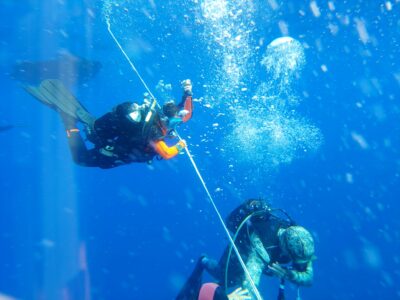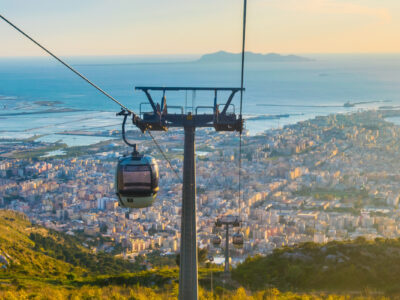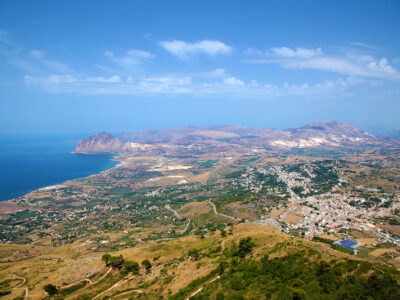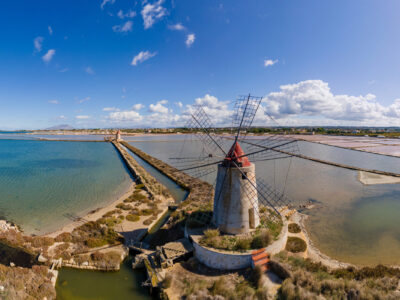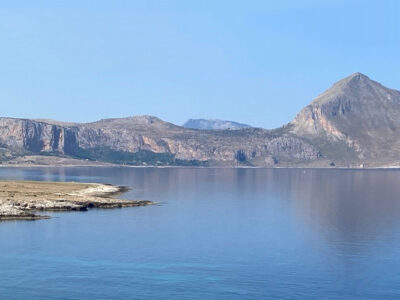The cathedral of San Lorenzo has ancient origins that date back to year 1102; renovated in the first half of the 14th century, it was elevated to parish by Alphonse the Magnanimous in 1421. In the 17th century it was enlarged by Friar Bonaventura Certo and in 1748 took on its current appearance thanks to architect G. B. Amico, who designed the chapels to the side of the apse, the choir, dome, bell tower and façade.
The façade has two orders the first of which, outwards, is occupied by a portico with three large round arches. The second, inwards, is curved with a convex aspect in the middle, concave at the wings.
The external appearance of the building is completed with the slender dome, flanked by four small buttress-like turrets.
The interior of the church has a basilical ground-plan with transept and three naves divided by rows of columns in Sicilian jasper: the whole has a strict Mannerist-Baroque setting. In the nave there are neoclassical stuccoes executed by Palermo-born Girolamo Rizzo and Onofrio Noto; the frescoes of the barrel vault are by Vincenzo Manno (1796-1802).
Among the works housed there: a Crucifixion of dubious attribution to famous Flemish artist Van Dyck, an Eternal Father and a Stoning of St. Stephen by Domenico La Bruna, a St. George by Trapani painter Andrea Carreca (left aisle), paintings by Giuseppe Felice depicting St. Anthony of Padua, St. Christopher and the Martyrdom of St. Lawrence.
Of particular interest the stone sculpture “Dead Christ” (18th cent.) by Giacomo Tartaglio, kept under the altar of the Sacrament in the right-hand apse.
This type of stone is known as ‘incarnata’ (ie fleshy pink) being a special kind of beige-pink alabaster with shades ranging from gray to black to red-brown, taken from a quarry in the Valderice area, near Casalbianco.
Also a marble bas-relief by Giuseppe Nolfo depicting the Nativity (18th century) is kept in the narthex.


